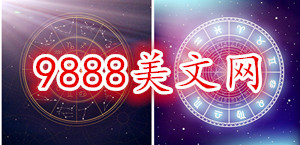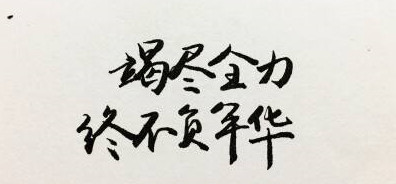 摘要:
初一上册英语1-12单元语法知识点一.词汇⑴单词1.介词:in,on,under,behind,near,at,of1).in表示"在……中","在……内"。例如:inourcla...
摘要:
初一上册英语1-12单元语法知识点一.词汇⑴单词1.介词:in,on,under,behind,near,at,of1).in表示"在……中","在……内"。例如:inourcla... 初一上册英语1-12单元语法知识点
一. 词汇
⑴ 单词
1. 介词:in, on, under, behind, near, at, of
1). in表示"在……中", "在……内"。例如:
in our class 在我们班上
in my bag 在我的书包里
in the desk 在桌子里
in the classroom 在教室里
2). on 表示"在……上"。例如:
on the wall 在墙上
on the desk 在桌子上
on the blackboard 在黑板上
3). under表示"在……下"。例如:
under the tree 在树下
under the chair 在椅子下
under the bed 在床下
4). behind表示"在……后面"。例如:
behind the door 在门后
behind the tree 在树后
5). near表示"在……附近"。例如:
near the teacher's desk 在讲桌附近
near the bed 在床附近
6). at表示"在……处"。例如:
at school 在学校
at home 在家
at the door 在门口
7). of 表示"……的"。例如:
a picture of our classroom 我们教室的一幅画
a map of China 一张中国地图
2. 冠词 a / an / the:
冠词一般位于所限定的名词前,用来署名名词所指的人或事物。冠词有不定冠词和定冠词两种。不定冠词有两个形式,即a和an。a用在以辅音音素开头的词前,如a book; an用在以元音音素开头的字母前,如an apple.
a或an与可数名词单数连用,泛指某类人或某物中的一个。
This is a cat.
这是一只猫。
It's an English book.
这是一本英语书。
His father is a worker.
他的爸爸是个工人。
the既可以用在可数名词前,也可以用在不可数名词前,表示某个或某些特定的人或事物,也可以指上文提到过的人或事物。
Who's the boy in the hat?
戴帽子的男孩是谁呀?
------ What can you see in the classroom?
------ I can see a bag.
------ Where's the bag?
------ It's on the desk.
------- 你能在教室里看到什么呀?
------ 我能看见一个书包。
------ 书包在哪呀?
------ 在桌子上。
3.some和any
①在肯定句中用some.例如:
There are some books on the desk.桌子上有一些书。
Lucy has some good books露西有一些好书。
②在疑问句和否定句中用any。例如:
Is there any ink in your pen?你的钢笔里有墨水吗?
Do you have any brothers and sisters?你有兄弟姐妹吗?
There isn't any water in the glass.杯子里没有水。
⑵记住它们的特殊用法。
①some亦可用于表示盼望得到对方肯定的答复或表示建议、委婉请求的疑问句中,这一点我们不久就会学到。例如:
Would you like to have some apples?你想吃苹果吗?
②any也可用于肯定句中,表示"任何的"。例如:
Any one of us can do this.我们当中任何一个都能做这个。
some 和any的用法是经常出现的考点,希望大家能准确地掌握它们的用法。
4.family
family看作为一个整体时,意思是"家庭",后面的谓语动词be用单数形式 is ;如把family看作为家庭成员时,应理解为复数,后面的谓语动词be应用are。
My family is a big family. 我的家庭是个大家庭。
My family are all at home now. 我的家人现在都在家。
Family强调由家人组成的一个集体或强调这个集体中的成员。home指个人出生、被抚养长大的环境和居住地点。 house指"家"、"房屋",侧重居住的建筑本身。
His family are all workers. 他的家人都是工人。
My home is in Beijing. 我的家在北京。
He isn't at home now. 他现在不在家。
It's a picture of my family. 这是一张我全家的照片。
5. little的用法
a little dog 一只小狗,a little boy 一个小男孩。little常用来修饰有生命的名词。
*但little还可表示否定意义,意为"少的",加不可数名词。
There is little time. 几乎没时间了。
There is little water in the cup. 杯中水很少。
⑵ 词组
on the desk 在桌子上
behind the chair 在椅子后
under the chair 在椅子下面
in her pencil-box 在她的铅笔盒中
near the door 在门附近
a picture of a classroom 一个教室的图片
look at the picture 看这张图片
the teacher's desk 讲桌
a map of China 一张中国地图
family tree 家谱
have a seat 坐下,就坐
this way 这边走
二. 日常用语
1. Come and meet my family.
2. Go and see. I think it's Li Lei.
3. Glad to meet you.
4. What can you see in the picture?
I can see a clock / some books.
5. Can you see an orange?
Yes, I can. / No, I can't.
6. Where's Shenzhen?
It's near Hong Kong.
7. Let me see.(口语)让我想想看。
see 在这是"明白、懂了",不可译作"看见"。例如:
8. Please have a seat.
seat表示"座位",是个名词。have a seat表示"就坐",也可以说take a seat, 和sit down的意思相同。
三. 语法
1. 名词所有格
名词如要表示与后面名词的所有关系,通常用名词所有格的形式,意为"……的"。一般有以下几种形式:
(1). 一般情况下在词尾加"'s"。例如:
Kate's father Kate的爸爸
my mother's friend 我妈妈的朋友
(2). 如果复数名词以s结尾,只加"'"。例如:
Teachers' Day 教师节
The boys' game 男孩们的游戏
(3). 如果复数名词不以s结尾,仍加"'s"。例如:
Children's Day 儿童节
Women's Day 妇女节
(4). 表示两个或几个共有时,所有格应加在后一个名词上。例如:
Lucy and Lily's room Lucy 和Lily的房间
Kate and Jim's father Kate 和Jim的爸爸
动物和无生命事物的名词的所有格一般不在词尾加"'s",而常常用介词of的短语来表示。
a map of China 一幅中国地图
the name of her cat 她的猫的名字
a picture of my family 我的家庭的一张照片
the door of the bedroom 卧室的门
2. 祈使句
祈使句主要用来表示说话人的请求、命令、建议、叮嘱等意图。祈使句一般不用主语,读时用降调。为使语气委婉、礼貌,常在句首或句尾加please 。在句尾时,please前多用逗号。
(1). 祈使句肯定形式的谓语动词一律用动词原形。
Go and see. 去看看。
Come in, please. 请进。
(2). 祈使句的否定形式常用don't于句首。
Don't look at your books. 不要看书。
Don't play on the road. 不要在马路上玩。
3. There be 的句子结构
There be是一个"存在"句型,表示"有"的意思,
肯定句的形式为:There be + 名词(单数或复数)+地点状语或时间状语。
be动词单复数的确定,看be后边第一个名词,当所接主语为单数或不可数名词时,be动词形式为is;当所接主语为复数名词时,be动词为are;当be动词后接两个以上主语时,be动词与最临近主语保持数上的一致。意思为"某地有某人或某物"。如:
There is an eraser and two pens on the desk. 桌子上有一块橡皮和两支钢笔。
There are two pens and an eraser on the desk. 桌上有两支钢笔和一块橡皮。
(1)there be的否定句,即在be的后面加上not。
否定形式为:There be + not + (any) + 名词+地点状语。
There is not any cat in the room. 房间里没猫。
There aren't any books on the desk. 桌子上没书。
(2)there be句型的疑问句就是将be提到句首:Be there + (any) +名词+地点状语?肯定回答:Yes, there is / are. 否定回答:No, there isn't / aren't.
---Is there a dog in the picture? 画上有一只狗吗?
---Yes, there is. 有。
---Are there any boats in the river? 河里有船吗?
---No, there aren't. 没有。
(3)特殊疑问句:How many . . . are there (+地点状语)?"某地有多少人或物?"回答用There be . . .
There's one. / There are two / three / some . . .
有时直接就用数字来回答。One. / Two . . .
---How many students are there in the classroom? 教室里有多少学生?
---There's only one. / There are nine. 只有一个。/有九个。
(4)如果名词是不可数名词,用:How much + 不可数名词 + is there + 地点状语?
How much water is there in the cup? 杯中有多少水?
How much food is there in the bowl? 碗里有多少食物?差不多 就这些了
求初一上册英语重点总结
倒装句
Here you are.
Here is my family photo.
正常语序 My family photo is here.
Here和there开头的句子,主语若是名词,就用倒装句
Here /there +动词+名词(主语)
e.g. Here is your ruler
注意:若主语是代词,就不用倒装
There it is.
take /bring ...to...
Unit6 Do you like bananas?
like sth. e.g. like eggs/oranges/bananas 像什么…
like to do sth 喜欢去做某事
He likes to play basketball
like doing sth (习惯性的)喜欢做某事
He likes playing basketball
三:复数名词的变化规则:
(3)以s,x,ch.sh,结尾的词,词尾加-es,读/iz/
bus-buses box-boxes
watch-watches fish-fishes
(4)以ce,se,ze,(d)ge等结尾的单词,直接在词尾加-S
e.g. price—prices case—cases
orange—oranges judge—judges
(6)以f或fe结尾的单词,变f或者fe为v再加-es
e.g. leaf—leaves life—lives
四 不规则名词的复数形式
A 单复同形的: Chinese Japanese
deer sheep
Unit7 How much are these pants?
短语
have a look (at sth.)
come and see
at a good price
need sth for sports
buy sth for $100
sell ...for $60
buy ...from...
Sb afford sth
sell ...to...
a pair of ...
a pair of shoes /shorts
Unit 8 when is your birthday?
短语
the birthday game
the youngest
the oldest
Labor’s Day
in 2007
in August
on August 1st
on September 10th, 2006
at night
at 12:00= at noon
重点句型
1 询问别人的生日,用when is ….
-What’s the date of his/her birth?
-His/Her birthday is May 3rd
3 对星期几提问
What day is it today?
It’s Sunday
对日期提问
What’s the date today?
It’s November 22nd
求初一英语上册知识点及复习提纲、、、谢谢
我的是人教版的啊一、48个国际音标及26个英文字母的正确书写
要熟练掌握元音和辅音,5个元音字母(a, e, i, o, u),字母的正确占格及单词间距。
二、be动词的用法
be动词有三种变形,分别是:am, is, are。记忆口诀:
“我”用am, “你”用are, is用于“他、她、它”;单数全都用is,复数全部都用are。
三、人称及人称代词的不同形式(主格和宾格)
1、三种人称:第一人称(I, we),第二人称(you, you),第三人称(he, she, it, Maria)。
2、人称代词的主格,即人称代词位于句子主语位置时的形态:I, We, You, You, He, She, It, Maria。
3、人称代词的宾格,即人称代词位于句子宾语位置时的形态:me, us, you, you, him, her, it。
4、形容词性物主代词:my, our, your, your, his, her, its, their。
5、名词性物主代词:mine, ours, yours, yours, his, hers, its, theirs。
6、反身代词:myself, ourselves, yourself, yourselves, himself, herself, itself, themselves。
四、基数词(表示数量多少的词,大致相当于代数里的自然数)
zero, one, two, three, four, five, six, seven, eight, nine, ten, eleven, twelve, thirteen, fourteen, fifteen, sixteen, seventeen, eighteen, nineteen, twenty, twenty-one, twenty-two, twenty-three,twenty-four, twenty-five, twenty-six, twenty-seven, twenty-eight, twenty-nine, thirty, forty, fifty, sixty,seventy, eighty, ninety, one hundred,one hundred and one。
五、一般疑问句及特殊疑问句
1、一般疑问句:能用Yes或No来回答的问句。一般疑问句句尾读升调。
2、特殊疑问句:不能用Yes或No来回答的问句。特殊疑问句句尾读降调。
六、可数名词变复数
可数名词变复数时,有规则变化和不规则变化两种。
1、规则变化:
1)一般情况直接在词尾加“-s ”,如:cake-cakes, bag-bags, day-days, face-faces, orange-oranges等;
2)以s, x, sh, ch结尾的词,要在词尾加“-es ”,如:bus-buses, watch-watches, box-boxes等;
3)以辅音字母加y结尾的词,变y为i再加“-es ”,如:baby-babies, country-countries, family-families等;
4)部分以f (e)结尾的词,变f (e)为“ves ”,如:knife-knives, half-halves等;
5)以o结尾的词,加“-s ”或“-es ”,如:zoo-zoos, photo-photos, tomato-tomatoes, potato-potatoes等。记忆口诀:除了“英雄”hero外,凡是能吃的,加“-es ”,不能吃的加“-s ”。
2、不规则变化:
1)改变单数名词中的元音字母:man-men, woman-women, foot-feet, tooth-teeth等;
2)单、复同形:sheep-sheep, Chinese-Chinese, Japanese-Japanese等;
3)其他形式:mouse-mice, child-children等。
七、简单句的成分及主谓一致原则
最基本构成:主语+谓语+宾语,其中谓语由动词来充当。
主谓一致原则,就是句子的谓语要始终与主语保持数量上的一致性。当主语是第三人称单数(简称“三单”)时,谓语动词也要相应变成单数形式;当主语非“三单”时,谓语动词就用原形。实意动词变“三单”的规则如下:
1)一般动词在词尾加“-s ”,如:like-likes, tell-tells, play-plays等;
2)以字母s, x,ch, sh结尾的动词加“-es ”,如:guess-guesses, teach-teaches, watch-watches等;
3)以o结尾的动词一般加“-es ”,如:do-does, go-goes等;
4)以辅音字母加y结尾的动词,先变y为i,再加“-而是”,如:fly-flies, carry-carries等;
5)have的三单形式是has。
八、冠词的用法(名词前面必须要有冠词)
冠词分为定冠词(the)和不定冠词(a, an)两种。
1、定冠词the表示“特指”,可译为“这个”、“那个”、“这些”、“那些”。
2、不定冠词a, an用来表明(可数)名词的数量是“一个”。an用于以元音开头(注意不是以元音字母开头)的单词前,a则英语非元音开头的单词前。
3、不定冠词a, an与基数词one的区别是:不定冠词不是刻意强调“数量”,而基数词则强调“数量”。
九、助动词(do, does )的用法
只有实意动词作谓语时才涉及使用助动词。以like为例:
1)当句子为肯定句时不涉及使用助动词,只涉及“主谓一致”原则。
eg : I like English a lot.
Michael likes Chinese food very much.
2)当句子为否定句时,要根据主语的人称来决定使用相应的助动词:当主语为“三单”时,要使用does;当主语为“非三单”时,用助动词原形do。例如把下列句子变否定句:
Kangkang likes math.----Kangkang doesn't like math.
They like sports.------They don't like sports.
3)当句子变疑问句时,同样要根据句子的主语来决定在句首使用Do或Does.例如下列句子变问句:
Michael likes Chinese Food.----Does Michael like Chinese food? Yes, he does./ No, he doesn't.
Jane and Helen like music.----Do Jand and Helen like music? Yes, they do./ No, they don't.
十、名词所有格
1、Kangkang's books;Tom and Helen's desk; Ann's and Maria's bikes;
2、用of表示“......的”,但要从of后往of前翻译:a book of mine(我的一本书)
3、have与of的区别:
have一般表示“主动拥有”,往往用于有生命的人或动物;无生命的物体一般不能“主动拥有”,表示所属关系时要用of。例如:
I have a new bike. She has two big eyes.
a door of the house
十一、课本中的知识点
1、Unit 1 ——Unit 2
1)问候语:
Good morning/ afternoon/ evening.
How are you?---Just OK, thank you. How are you?---Not bad, thanks.
Hi! Hello!
How do you do?
2)道别用语:
Nice/ Glad to meet/ see you.(meet用于初次见面,see用于熟人间)
Nice to meet/ see you, too.
Goodbye. Byebye. Bye. See you (later/ tomorrow/ next time)! So long! Good night!
3)介绍人或者物的句型:This is...
4)Excuse me.与I'm sorry.的区别:
Excuse me.是要引起对方的注意,而I'm sorry.则是向对方道歉。
5)词组be from = come from
in English
5)当问句中问到this/ that时,回答要用it;问到these/ those时,要用they来回答。 例如: What's this in English?----It's an eraser.
What are those?----They are books.
6)对Thanks.的回答:That's OK./ You're welcome./ My pleasur.
7)look the same = have the same looks
give sth. to sb. = give sb. sth.
be like = look like
in the tree/ on the tree (树上结的、长出来的用on,否则用in)
in red(穿着红色的衣服)
in the desk(在空间范围之内)
in English(用英语)
help sb. do sth.
8)both与all的区别:
both表示“两者都......”;all表示“三者及以上都......”。
2、Unit 3——Unit 4
1)speak的用法
speak与say不同:speak表示“说”的动作,不表示“说”的内容;say则表示“说”的内容。
speak后面除了能接“语言”外,不能直接接东西,后面加了to则表示“对......说”。
help sb. with sth.(帮助某人做/补习......)
want to do sth.(想要做某事)
would like to do sth.
not...at all(一点都不);Not at all.(没关系/别介意)
like...a lot = like...very much
2)some和any的区别:
口诀:some用于肯定句,否定、疑问变any。例如:
I have some money.
I don't have any money.
Do you have any money?
3)have a seat = take a seat(请随便坐)
4)祈使句(表示命令或请求的句子)
祈使句一般都省略了主语You,所以其否定句直接用Don't开头。例如:
Don't go there!
5)问职业:
What does sb. do?
What is sb.?
What's sb.'s job?
6)work与job的区别:
work是未必有报酬的“工作”,例如homework, housework;而job则一定是有报酬的“工作”。
7)on指在物体的表面,不论这个面是否水平的,例如:
on the desk/ wall/ farm/ playground
8)in hospital(住院);in the hospital(在医院里)
look after(照料/照顾/照看)
help oneself(请自便/随便吃)
9)表示“建议”的句型:“做某事如何?”
What about (doing) sth.? (英式英语)
How about (doing) sth.? (美式英语)
Why don't you do sth.? = Why not do sth.?
10)“吃”一日三餐要用have:have breakfast/ lunch/ supper
have...for breakfast/ lunch/ supper
take one's order
be kind to sb.
11)try on这个词组可合可分:名词可以放在这个词组的中间或后面,但代词只能放在词组的中间。
12)在口语中往往用take表示“买”。
13)how many与how much的区别:
how many + 可数名词;how much + 不可数名词
14)What do you think of...? 是询问对方对某事物的看法;
How do you like...? 是问对方对某事物喜欢的程度。
think about(考虑)
Thank you all the same. (即使对方没能帮上忙,也要礼貌道谢)
Thanks. = Thank you.(thank作为动词,不能单独使用。)
15)one与it的区别:
当上下文说的是同一种类事物时,任意一个可以用one来代替;如果上下文所说的是同一个事物时则用it。例如:
Ann :I have a yellow bag.
Jane :I have a green one.
Tom : Hey, Mike. Where is your bike?
Mike : Look, it's over there.
16)倒装句
Here you are.
Here it is.
17)be free (有空/免费)
forget to do sth.(忘了去做某事)
forget doing sth.(忘了做过某事)
What's up? = What's wrong with...? = What's the matter with...?
18)go + v.-ing结构的含义:为了实现某目的才去的。例如:
go fishing/ boating/ swimming/ shopping等
19)have to do sth.(非主观因素,强调客观因素,“不得不去做某事”)
must 则表示主观愿望
20)fly a kite = fly kites
be free = have time
21)时间的表述
当分针所指的时间大于0分、小于等于30分钟时,用“分钟”past“小时”。例如:
8:23——twenty-three past eight
当分针所指的时间大于30分钟、小于60分钟时,用“剩余的时间”to“下一个整点”。例如:
8:49——eleven to nine
当然,还可以直接按照小时、分钟去读出时间,例如:
8:23——eight twenty-three; 8:49——eight forty-nine
整点则在数词后加“-o'clock”,例如:8:00——eight o'clock
在钟点前介词要用at.
22)句型“该干某事了。”:It's time to do sth. = It's time for sth.
例如:该吃午饭了.
It's time to have lunch. = It's time for lunch.
初一英语语法总结
初一英语语法总结
一、 词法 1、名词 A)、名词的数
我们知道名词可以分为可数名词和不可数名词,而不可数名词它没有复数形式,但可数名词却有单数和复数之分,复数的构成如下:
一)在后面加s。如:fathers, books, Americans, Germans, apples, bananas
二)x, sh, ch, s, tch后加es。如:boxes, glasses, dresses, watches, wishes, faxes
三)1)以辅音字母加y结尾的变y为i再加es 如:baby-babies, family-families, duty-duties, comedy-comedies, documentary-documentaries, story-stories
2)以元音字母加y结尾的直接加s。如:day-days, boy-boys, toy-toys, key-keys, ways
四)以o结尾加s(外来词)。如:radios, photos, 但如是辅音加o的加es:如: tomatoes西红柿, potatoes马铃薯
五)以f或fe结尾的变f为v再加es(s)。如:knife-knives, wife-wives, half-halves, shelf-shelves, leaf-leaves, yourself-yourselves
六)单复数相同(不变的)有:fish, sheep, deer鹿子, Chinese, Japanese
七)一般只有复数,没有单数的有:people,pants, shorts, shoes, glasses, gloves, clothes, socks
八)单词形式不变,既可以是单数也可以是复数的有:police警察局,警察, class班,同学, family家,家庭成员
九)合成的复数一般只加主要名词,多数为后一个单词。如:action movie-action movies, pen pal-pen pals; 但如果是由man或woman所组成的合成词的复数则同时为复数。如:man doctor-men doctors, woman teacher-women teachers
十)有的单复数意思不同。如:fish鱼 fishes鱼的种类, paper纸 papers报纸,卷子,论文, work工作 works作品,工厂, glass玻璃 glasses玻璃杯,眼镜, orange桔子水 oranges橙子, light光线 lights灯, people人 peoples民族, time时间 times时代, 次数, chicken 鸡肉 chickens 小鸡
十一) 单个字母的复数可以有两种形式直接加s或’s。如:Is (I’s), Ks (K’s)。但如是缩略词则只加s。如:IDs, VCDs, SARs
十二) 特殊形式的有:child-children, man-men, woman-women, foot-feet, mouse-mice, policeman-policemen, Englishman-Englishmen
B)名词的格
当我们要表示某人的什么东西或人时,我们就要使用所有格形式。构成如下:
一)单数在后面加’s。如:brother’s, Mike’s, teacher’s
二)复数以s结尾的直接在s后加’,如果不是以s结尾的与单数一样处理。如:Teachers’ Day教师节, classmates’; Children’s Day六一节, Women’s Day三八节
三)由and并列的名词所有时,如果是共同所有同一人或物时,只加最后一个’s,但分别拥有时却分别按单数形式处理。如:Mike and Ben’s room迈克和本的房间(共住一间),Mike’s and Ben’s rooms迈克和本的房间(各自的房间)
2、代词 项目 人称代词 物主代词 指示代词 反身代词
人称 主格 宾格 形容词 名词性
第一人称 单数 I me my mine myself
复数 we us our ours ourselves
第二人称 单数 you you your yours yourself
复数 you you your yours yourselves
第三人称 单数 she her her hers herself
he him his his himself it it its its this that itself
复数 they them their theirs these those themselves
3、动词 A) 第三人称单数
当动词是第三人称单数时,动词应该像名词的单数变动词那样加s,如下:
一)一般在词后加s。如:comes, spells, waits, talks, sees, dances, trains
二)在x, sh, ch, s, tch后加es。如:watches, washes, wishes, finishes
三)1)以辅音字母加y结尾的变y为i再加es。如:study-studies, hurry-hurries, try-tries
2)以元音字母加y结尾的直接加s。如:plays, says, stays, enjoys, buys
四)以o结尾加es。如:does, goes 五)特殊的有:are-is, have-has
B) 现在分词
当我们说某人正在做什么事时,动词要使用分词形式,不能用原形,构成如下:
一)一般在后加ing。如:spell-spelling, sing-singing, see-seeing, train-training, play-playing, hurry-hurrying, watch-watching, go-going, do-doing
二)以不发音e的结尾的去掉e再加ing。如:dance-dancing, wake-waking, take-taking, practice-practicing, write-writing, have-having
三)以重读闭音节结尾且一个元音字母+一个辅音字母(注意除开字母组合如show –showing, draw-drawing)要双写最后的辅音字母再加ing。如:put-putting, run-running, get-getting, let-letting, begin-beginning
四)以ie结尾的变ie为y再加ing。如:tie-tying系 die-dying死 lie-lying 位于
4、形容词的级
我们在对两个或以上的人或物进行对比时,则要使用比较或最高级形式。构成如下:
一) 一般在词后加er或est(如果是以e结尾则直接加r或st)。如:greater-greatest, shorter –shortest, taller –tallest, longer –longest, nicer- nicest, larger -largest
二)以重读闭音节结尾且1个元音字母+1个辅音字母(字母组合除外,如few-fewer fewest)结尾的双写结尾的辅音再加er /est。如:big-bigger biggest, red-redder reddest, hot-hotter hottest
三) 以辅音字母+y结尾的变y为i加er/est。如:happy-happier happiest, sorry-sorrier sorriest, friendly-friendlier friendliest(more friendly most friendly), busy-busier busiest, easy-easier easiest
四)特殊情况:(两好多坏,一少老远)
good/well - better best many/much - more most bad/ill – worse worst
little- less least old- older/elder oldest/eldest far- farther/further farthest/furthest
5、数词 (基变序,有规则;一、二、三,自己背;五、八、九、十二;其它后接th;y结尾,变为i, eth跟上去。) first, second, third; fifth, eighth, ninth, twelfth; seventh, tenth, thirteenth, hundredth; twenty-twentieth, forty-fortieth, ninety-ninetieth
二、句式
1.陈述句 肯定陈述句
a) This is a book. (be动词)
b) He looks very young. (连系动词)
c) I want a sweat like this. (实义动词)
d) I can bring some things to school. (情态动词)
e) There’s a computer on my desk. (There be结构)
否定陈述句
a) These aren’t their books. b) They don’t look nice. c) Kate doesn’t go to No. 4 Middle School.
d) Kate can’t find her doll. e) There isn’t a cat here. (=There’s no cat here.)
2. 祈使句
肯定祈使句 a) Please go and ask the man. b) Let’s learn English! c) Come in, please.
否定祈使句a) Don’t be late. b) Don’t hurry.
3. 疑问句
1) 一般疑问句 a) Is Jim a student? b) Can I help you? c) Does she like salad? d) Do they watch TV? e) Is she reading?
肯定回答: a) Yes, he is. b) Yes, you can. c) Yes, she does. d) Yes, they do. e) Yes, she is.
否定回答: a) No, he isn’t. b) No, you can’t. c) No, she doesn’t. d) No, they don’t. e) No, she isn’t.
2) 选择疑问句 Is the table big or small? 回答 It’s big./ It’s small.
3) 特殊疑问句
① 问年龄 How old is Lucy? She is twelve.
② 问种类 What kind of movies do you like? I like action movies and comedies.
③ 问身体状况 How is your uncle? He is well/fine.
④ 问方式 How do/can you spell it? L-double O-K.
How do we contact you? My e-mail address is cindyjones@163.com.
⑤ 问原因 Why do you want to join the club?
⑥ 问时间 What’s the time? (=What time is it?) It’s a quarter to ten a.m..
What time do you usually get up, Rick? At five o’clock.
When do you want to go? Let’s go at 7:00.
⑦ 问地方 Where’s my backpack? It’s under the table.
⑧ 问颜色 What color are they? They are light blue. What’s your favourite color? It’s black.
⑨ 问人物 Who’s that? It’s my sister.
Who is the boy in blue? My brother.
Who isn’t at school? Peter and Emma.
Who are Lisa and Tim talking to?
⑩ 问东西 What’s this/that (in English)? It’s a pencil case.
What else can you see in the picture? I can see some broccoli, strawberries and hamburgers.
11问姓名 What’s your aunt’s name? Her name is Helen./She’s Helen.
What’s your first name? My first name’s Ben.
What’s your family name? My family name’s Smith.
12 问哪一个 Which do you like? I like one in the box.
13 问字母 What letter is it? It’s big D/small f.
14 问价格 How much are these pants? They’re 15 dollars.
15 问电话号码 What’s your phone number? It’s 576-8349.
16 问谓语(动作) What’s he doing? He’s watching TV.
17 问职业(身份) What do you do? I’m a teacher.
What’s your father? He’s a doctor.
三、时态
1、一般现在时
表示普遍、经常性的或长期性的动作时使用一般现在时,它有:
Be 动词:She’s a worker. Is she a worker? She isn’t a worker.
情态动词:I can play the piano. Can you play the piano? I can’t play the piano.
行为动词:They want to eat some tomatoes. Do they want to eat any tomatoes? They don’t want to eat any tomatoes.
Gina has a nice watch. Does Gina have a nice watch? Gina doesn’t have a watch.
2、现在进行时
表示动词在此时正在发生或进行就使用进行时态,结构为sb be v-ing sth + 其它.
I’m playing baseball. Are you playing baseball? I’m not playing baseball.
Nancy is writing a letter. Is Nancy writing a letter? Nancy isn’t writing a letter.
They’re listening to the pop music. Are they listening the pop music? They aren’t listening to the pop music.
初一英语语法总结
初一英语语法总结
一、 词法 1、名词 A)、名词的数
我们知道名词可以分为可数名词和不可数名词,而不可数名词它没有复数形式,但可数名词却有单数和复数之分,复数的构成如下:
一)在后面加s。如:fathers, books, Americans, Germans, apples, bananas
二)x, sh, ch, s, tch后加es。如:boxes, glasses, dresses, watches, wishes, faxes
三)1)以辅音字母加y结尾的变y为i再加es 如:baby-babies, family-families, duty-duties, comedy-comedies, documentary-documentaries, story-stories
2)以元音字母加y结尾的直接加s。如:day-days, boy-boys, toy-toys, key-keys, ways
四)以o结尾加s(外来词)。如:radios, photos, 但如是辅音加o的加es:如: tomatoes西红柿, potatoes马铃薯
五)以f或fe结尾的变f为v再加es(s)。如:knife-knives, wife-wives, half-halves, shelf-shelves, leaf-leaves, yourself-yourselves
六)单复数相同(不变的)有:fish, sheep, deer鹿子, Chinese, Japanese
七)一般只有复数,没有单数的有:people,pants, shorts, shoes, glasses, gloves, clothes, socks
八)单词形式不变,既可以是单数也可以是复数的有:police警察局,警察, class班,同学, family家,家庭成员
九)合成的复数一般只加主要名词,多数为后一个单词。如:action movie-action movies, pen pal-pen pals; 但如果是由man或woman所组成的合成词的复数则同时为复数。如:man doctor-men doctors, woman teacher-women teachers
十)有的单复数意思不同。如:fish鱼 fishes鱼的种类, paper纸 papers报纸,卷子,论文, work工作 works作品,工厂, glass玻璃 glasses玻璃杯,眼镜, orange桔子水 oranges橙子, light光线 lights灯, people人 peoples民族, time时间 times时代, 次数, chicken 鸡肉 chickens 小鸡
十一) 单个字母的复数可以有两种形式直接加s或’s。如:Is (I’s), Ks (K’s)。但如是缩略词则只加s。如:IDs, VCDs, SARs
十二) 特殊形式的有:child-children, man-men, woman-women, foot-feet, mouse-mice, policeman-policemen, Englishman-Englishmen
B)名词的格
当我们要表示某人的什么东西或人时,我们就要使用所有格形式。构成如下:
一)单数在后面加’s。如:brother’s, Mike’s, teacher’s
二)复数以s结尾的直接在s后加’,如果不是以s结尾的与单数一样处理。如:Teachers’ Day教师节, classmates’; Children’s Day六一节, Women’s Day三八节
三)由and并列的名词所有时,如果是共同所有同一人或物时,只加最后一个’s,但分别拥有时却分别按单数形式处理。如:Mike and Ben’s room迈克和本的房间(共住一间),Mike’s and Ben’s rooms迈克和本的房间(各自的房间)
2、代词 项目 人称代词 物主代词 指示代词 反身代词
人称 主格 宾格 形容词 名词性
第一人称 单数 I me my mine myself
复数 we us our ours ourselves
第二人称 单数 you you your yours yourself
复数 you you your yours yourselves
第三人称 单数 she her her hers herself
he him his his himself it it its its this that itself
复数 they them their theirs these those  themselves
themselves
3、动词 A) 第三人称单数
当动词是第三人称单数时,动词应该像名词的单数变动词那样加s,如下:
一)一般在词后加s。如:comes, spells, waits, talks, sees, dances, trains
二)在x, sh, ch, s, tch后加es。如:watches, washes, wishes, finishes
三)1)以辅音字母加y结尾的变y为i再加es。如:study-studies, hurry-hurries, try-tries
2)以元音字母加y结尾的直接加s。如:plays, says, stays, enjoys, buys
四)以o结尾加es。如:does, goes 五)特殊的有:are-is, have-has
B) 现在分词
当我们说某人正在做什么事时,动词要使用分词形式,不能用原形,构成如下:
一)一般在后加ing。如:spell-spelling, sing-singing, see-seeing, train-training, play-playing, hurry-hurrying, watch-watching, go-going, do-doing
二)以不发音e的结尾的去掉e再加ing。如:dance-dancing, wake-waking, take-taking, practice-practicing, write-writing, have-having
三)以重读闭音节结尾且一个元音字母+一个辅音字母(注意除开字母组合如show –showing, draw-drawing)要双写最后的辅音字母再加ing。如:put-putting, run-running, get-getting, let-letting, begin-beginning
四)以ie结尾的变ie为y再加ing。如:tie-tying系 die-dying死 lie-lying 位于
4、形容词的级
我们在对两个或以上的人或物进行对比时,则要使用比较或最高级形式。构成如下:
一) 一般在词后加er或est(如果是以e结尾则直接加r或st)。如:greater-greatest, shorter –shortest, taller –tallest, longer –longest, nicer- nicest, larger -largest
二)以重读闭音节结尾且1个元音字母+1个辅音字母(字母组合除外,如few-fewer fewest)结尾的双写结尾的辅音再加er /est。如:big-bigger biggest, red-redder reddest, hot-hotter hottest
三) 以辅音字母+y结尾的变y为i加er/est。如:happy-happier happiest, sorry-sorrier sorriest, friendly-friendlier friendliest(more friendly most friendly), busy-busier busiest, easy-easier easiest
四)特殊情况:(两好多坏,一少老远)
good/well - better best many/much - more most bad/ill – worse worst
little- less least old- older/elder oldest/eldest far- farther/further farthest/furthest
5、数词 (基变序,有规则;一、二、三,自己背;五、八、九、十二;其它后接th;y结尾,变为i, eth跟上去。) first, second, third; fifth, eighth, ninth, twelfth; seventh, tenth, thirteenth, hundredth; twenty-twentieth, forty-fortieth, ninety-ninetieth
二、句式
1.陈述句 肯定陈述句
a) This is a book. (be动词)
b) He looks very young. (连系动词)
c) I want a sweat like this. (实义动词)
d) I can bring some things to school. (情态动词)
e) There’s a computer on my desk. (There be结构)
否定陈述句
a) These aren’t their books. b) They don’t look nice. c) Kate doesn’t go to No. 4 Middle School.
d) Kate can’t find her doll. e) There isn’t a cat here. (=There’s no cat here.)
2. 祈使句
肯定祈使句 a) Please go and ask the man. b) Let’s learn English! c) Come in, please.
否定祈使句a) Don’t be late. b) Don’t hurry.
3. 疑问句
1) 一般疑问句 a) Is Jim a student? b) Can I help you? c) Does she like salad? d) Do they watch TV? e) Is she reading?
肯定回答: a) Yes, he is. b) Yes, you can. c) Yes, she does. d) Yes, they do. e) Yes, she is.
否定回答: a) No, he isn’t. b) No, you can’t. c) No, she doesn’t. d) No, they don’t. e) No, she isn’t.
2) 选择疑问句 Is the table big or small? 回答 It’s big./ It’s small.
3) 特殊疑问句
① 问年龄 How old is Lucy? She is twelve.
② 问种类 What kind of movies do you like? I like action movies and comedies.
③ 问身体状况 How is your uncle? He is well/fine.
④ 问方式 How do/can you spell it? L-double O-K.
How do we contact you? My e-mail address is cindyjones@163.com.
⑤ 问原因 Why do you want to join the club?
⑥ 问时间 What’s the time? (=What time is it?) It’s a quarter to ten a.m..
What time do you usually get up, Rick? At five o’clock.
When do you want to go? Let’s go at 7:00.
⑦ 问地方 Where’s my backpack? It’s under the table.
⑧ 问颜色 What color are they? They are light blue. What’s your favourite color? It’s black.
⑨ 问人物 Who’s that? It’s my sister.
Who is the boy in blue? My brother.
Who isn’t at school? Peter and Emma.
Who are Lisa and Tim talking to?
⑩ 问东西 What’s this/that (in English)? It’s a pencil case.
What else can you see in the picture? I can see some broccoli, strawberries and hamburgers.
11问姓名 What’s your aunt’s name? Her name is Helen./She’s Helen.
What’s your first name? My first name’s Ben.
What’s your family name? My family name’s Smith.
12 问哪一个 Which do you like? I like one in the box.
13 问字母 What letter is it? It’s big D/small f.
14 问价格 How much are these pants? They’re 15 dollars.
15 问电话号码 What’s your phone number? It’s 576-8349.
16 问谓语(动作) What’s he doing? He’s watching TV.
17 问职业(身份) What do you do? I’m a teacher.
What’s your father? He’s a doctor.
三、时态
1、一般现在时
表示普遍、经常性的或长期性的动作时使用一般现在时,它有:
Be 动词:She’s a worker. Is she a worker? She isn’t a worker.
情态动词:I can play the piano. Can you play the piano? I can’t play the piano.
行为动词:They want to eat some tomatoes. Do they want to eat any tomatoes? They don’t want to eat any tomatoes.
Gina has a nice watch. Does Gina have a nice watch? Gina doesn’t have a watch.
2、现在进行时
表示动词在此时正在发生或进行就使用进行时态,结构为sb be v-ing sth + 其它.
I’m playing baseball. Are you playing baseball? I’m not playing baseball.
Nancy is writing a letter. Is Nancy writing a letter? Nancy isn’t writing a letter.
They’re listening to the pop music. Are they listening the pop music? They aren’t listening to the pop music.
初一下英语知识点总结!
我提供给你的东西够你初中三年用的,你好好保存,一定会有用的。
1.in 的固定词组:
(1)in English (2) in red
(3)in turn (4) in ink
(5)in return (6) in 1987
(7)in spring (8) in March
(9)in the morning (10)in line
(11)in front of (12)in the front of
(13)in a hurry (14)in need of
(15)in the tree (16)in use
(17)in the sun (18)in touch with
(19)in time (20)in no time
(21)in cash (22)in trouble
(23)in the east (24)in the end
(25)in a low voice (26)in the middle of
(27)in charge of (28)in a word
(29)in thirties (30)in one's twenties
(31)in the face (32)in the corner
(33)in surprise (34)in advance
(35)in 3 days (36)in this way
(37)in addition to
2. on 的固定词组:
(1) on Sunday (2) on duty
(3) on Christmas (4) on one's birthday
(5) on one's way to(6) on the tree
(7) on the left (8) on the east of
(9) on foot (10)on behalf of
(11)on time (12)on and on
(13)on business (14)on leave
(15)on the back (16)on watch
(17)on the corner (18)on purpose
(19)on the contrary(20)on the opposite of
(21)on show (22)on sale
(23)on December 5th
3. at 的固定词组:
(1) at night (2) at noon
(3) at home (4)at the crossing
(5) at sis o'clock (6) at half past six
(7) at 6:30 (8) at a quarter to six
(9) at the end of (10)at the beginning of
(11)at the top of (12)at least
(13)at last (14)at the corner of
(15)at school (16)at work
(17)at the speed of(18)at the temperature of
(19)at first (20)at 6:00 sharp
(21)at the foot of
4. of 的固定词组:
(1) first of all (2) because of
(3)all of (4) one of
(5) some of (6) many of
(7) none of (8) a lot of
(9) lots of (10)a piece of
(11)a pair of (12)a great deal of
(13)a great deal of(14)a great amount of
(15)plenty of (16)all of a sudden
(17)out of control (18)out of...
(19)in front of (20)in the front of
(21)of one's own (22)as the matter of fact
(23)of course (24)hundreds of
(25)thousands of (26)a pile of
(27)a map of China (28)certain amount of
(29)in need of (30)in name of
5. by 的固定词组
(1) by the way (2) by bus
(3) by bike (4) by ship= by sea
(5) by taxi (6) by plane= by air
(7) by subway (8) by train= by railway
(9) by the end of (10)by chance
(11)by oneself (12)by means of
(13)step by step (14)by the river side
6. after 的固定词组
(1) after all (2) after 3 days
(3) after you (4) after class
(5) after school (6) after work
(7) after me (8) the day after tomorrow
(9) day after day (10)one after another
7. with 的固定词组:
(1) with one's help (2)with the help of
(3) with a pen (4)with a smile
8. as 的固定词组
(1) as well (2) as...as
(3) as a student (4) as long as
(5) as if (6) as soon as possible
(7) as soon as (8) as a result
9. about 的固定词组
(1) about grammar (2) about 6 feet long
(3) about 30 people
10. from 的固定词组
(1) from...to.. (2) far from
(3) different from
11. for 的固定词组
(1) for example (2) for instance
(3) for a long time (4) for time being
(5)except for...
一. 动词 + 介词句型 (v.+ prep.)
1. get on ... 2. get off...
3. get to ... 4. get in...
5. turn on... 6. turn off...
7. turn around... 8. turn in...
9. turn... into... 10.get on well with...
11.put on... 12.take off...
13.put...into... 14.translate...into...
15.prepare for... 16.pay for...
17.spend...on... 18.depend on...
19.live on... 20.apologize for...
21.switch on... 22.switch off...
23.believe in... 24.take part in...
25.die of... 26.die from...
27.be from... 28.come from...
29.laugh at... 30.take away...
31.look at... 32.look after...
33.look for... 34.look up...
35.look around... 36.look into...
37.arrive at... 38.arrive in...
39.change...into...40.get ready for...
41.agree to... 42.agree with...
43.leave...for... 44.belong to...
45.turn to... 46.bring up...
47.go over... 48.begin with...
49.care about... 50.eat up...
51.keep on... 52.hold on...
53.insist on... 54.rely on...
55.lend...to... 56.borrow...from...
57.think about... 58.think of...
59.think...over 60.devide...into...
61.learn from... 62.write to...
63.listen to... 64.hear of...
65.hear from... 66.turn around...
67.put off... 68.wait for...
69.get hold of... 70.get ready for...
71.speak up 72.thank to...
73.see sb. off 74.set off
75.get rid of... 76.give up...
77.turn to... 78.face to...
79.result in... 80.look forward to...
81.point at... 82.log in...
83.major in... 84.devote oneself into...
85.graduate from..86.show sb. around...
87.run after... 88.find out...
89.help sb. with..90.catch up with...
91.work hard at...92.take care of...
93.regard...as... 94.tie...to...
95.shout at... 96.stick to...
97.cut...into... 98.call on...
99.take part in.. 100.look like...
101.sound like... 102.hit sb. in(on)...
103.take...as... 104.find out...
105.stand for... 106.stop sb. from...
二. be + 形容词 + 介词句型 (be + adj. + prep.)
1. be good at... 2. be interested in...
3. be ready for...4. be angry with...
5. be late for... 6. be satisfied with...
7. be sorry for...8. be famous for...
9. be made of... 10.be made from...
11.be strict in...12.be strict with...
13.be named after.14.be known as...
15.be thankful to.16.be grateful to...
17.be careful of..18.be appreciated to...
19.be cautious of..20.be fond of...
21.be addicted to..22.be crazy about...
23.be active in... 24.be happy with...
25.be made by... 26.be full of...
27.be covered with.28.be anxious about...
29.be worried about30.be familiar with...
31.be opposite to..32.be proud of...
33.be close to... 34.be short of...
35,be related to.. 36.be married to...
37.be busy with... 38.be based on...
39.be far from... 40.be disappointed at...
41.be worth of... 42.be different from...
43.be used to... 44.be jealous of...
45.be superior to..46.be succeeded in...
47.be sure of... 48.be surprised at...
49.be hard at... 50.be skillful in...
51.be clear about..52.be concerned about...
53.be friendly to..54.be frank to...
初一英语基础知识总结
七年级英语上知识点
一
1. want sth./to do sth. 想要某物/做某事
2. love to listen to …喜欢听……
3.介词+V-ing : Thanks for ___ (come) to my party! Thank you for _____(help) me.
4.动词like, want, have,play 等,在变否定句和疑问句时要用do, don’t ;does,doesn’t
5. can +动词原形
6. 主语用三单,动词也要用三单
7. He does homework(否定句) He doesn’t(助动词)do(行为动词)homework
8. Let’s +V-原 : Do you like _____(draw)? Let’s _____(go) to the art club .
9. help sb.(to) do sth. =help sb. with sth. 帮助某人做某事
10.He is helping Tom ____(learn )English.
11. 在时刻前用at,在星期几前用on,在年/月/早上/下午/晚上前用 in, 日前用on
在早晨用in,在具体某一天的早晨用on : on the morning of July 2nd
12.带来用bring…to,带走用take…to
13. 回答赞美的句子用Thank you !
14. 十二个月用twelve months
15.穿什么颜色的衣服用 in +颜色
16.乐器前要加the: play the violin
17.play+体育运动
18.某一餐吃什么用for+三餐之一 eat/have /like…for+某一餐
19. 问价格用How much is/ are…? 问数量用 How much+不可数名词+…? How many+可数名词(pl.)+…?
20 . .问在何时做某事用When/What time What time is ti?= What’s the time?
21. 问年龄用How old How old is Mike? =What’s Mike’s age?
22. 问地点用where
23.问原因用Why,回答用 Because
24.问颜色用What color , 回答用It’s/ They’re +颜色
25.问生日用When is A’s birthday? 回答时用月份+日期(序数词)如:November(the) ninth
26.在墙上用 on the wall
27. also用在句中,too用在句末
28序数词前一定要加the
29. an apple /a red apple
30.表共同拥有用Aand B’s,表各自所有用A’s and B’s
31. He likes red best(最喜欢).=His favorite color is red
32. look at =have a look at
33. an alarm clock
34. You play the guitar well.(副词修饰动词) He is a good student.(形容词修饰名词)
35. 我和某人用…and I ,表复数,be动词用are
36.the fifth month/ day of the year/ week
37. home前不能用 to :go/get/at home
38. parents=father and mother;parent=father or mother
39. 表顺接用and,表转折用but
40. 名词前用物主代词: her friends
41. 可数名词用they/them代替,不可数名词用it代替
42.以 am/is/are / do/does/ can 开头的句子是一般问句,回答时用Yes/No,+主语(代词)+句首单词(Areyou -----? I am )
43. 我们用各种颜色的短裤:We have pants in all colors
44. favorite/birthday 前一定要加物主代词:my favorite subject/his birthday
45 after class(正确), after the class(错误)
46 打两小时的篮球:play basketball for two hours
47. a lot of =lots of 用于可数/不可数前
48. many=lots of =a lot of (后接可数名称复数)
49. much=lots of =a lot of(后接不可数名词)
50 people永远表复数;Chinese,Japanese单复数一致: many people/Chinese/Japanese
51. some/any+可数名词复数/不可数名词 some用于肯定句,any用于否定句和疑问句
52. 数词(1除外)后名词要用复数:three tomatoes
53. 介词后动词用ing,代词用宾格: Thanks for helping me / Write a letter to them
54. some+ food/orange/salad 等不可数名词表单数,be 动词用is
55.Teachers’ Day(教师节)
56. like reading and playing sports
57. can join=can be in
58.How old is she?= What’s her age?
59.你妈妈最喜欢的颜色:your mother’s favorite color
60. T-shirts in green and black(绿黑相间的T恤衫)
61. on Saturday afternoon(在周六下午)
62. take him to work
63. go home with Jim
64. speak(+a little)+语言
65. 想成为:want to be
66. learn about art
67. 几十几的数词要加 - :twenty-two
68. Let’s go to the store
69. 哪种颜色:what kind of color
70. an Art Festival
71. be busy with/doing
72.16岁:sixteen years old 或 sixteen
73. a photo of her family =her family photo
74.be strict with
75.你听什么?What do you listen ____?
76.他姓什么?What is __ ___ ___?
77. 我不做家庭作业:I___ ____ my homework
78.他周末做什么?What ___he ___ ___ weekends?
79 We need two musicians___ our rock band.
80 help the boys with _____(paint)
81. the________(第十二) month of the year
82. can’t sing _____ dance
83. Let’s ___ ___ the picture.(看)
84.the first day of the week is_____
85 许多种类的毛衣:many_____ _____ sweaters
86.- ____ can play the piano?- Tom can.
87. 学校组织郊游:the ___ ___
88. 三个月大:three ____ old
89. 穿红衣服的女孩:the girl_____ _____
90. 他常和他哥哥一起去看动作篇:He often ____ ___ ___ action movies _______ his brother.
91. 给你______ ______ ________
92. 我和汤姆是兄弟___and___are____
93. 许多人:many______
94.那个女孩和她姐姐在家。The girl ,with her sister___(be)at home ./ The girl and her sister ___(be) at home.
95.-- Is your birthday October 5th?—Yes, ___ ___
96.他的五岁生日:_____ ____ birthday
97. _____the morning _____ Dec.12th
98. sweaters ___ all/many ___(各/多种颜色的毛衣)
99. all my ________(老师的) birthdays
100. 举行英语聚会:have ______ _____ ______
101. 许多字典:____ ______ / _____ _____ _____ _____
102.我能帮你忙吗?______ _____ _____ _____? 或者____ ___ __ __ __ ____?
103. 一幅一个房间的图 a_____ _____ a ______
104. 我和吉姆:Jim and I ____(be)______(friend)
105. 一个蛋和一些花椰菜 ___egg and ____ broccoli.
106. 把这些水果带到你哥那儿去_____ the_____ ____ your _____
(这是在网上找到的,你可以上去找找看)









